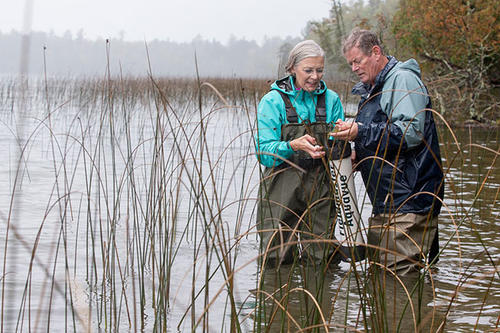
Turtle Lake in Itasca County is iconic Minnesota, but things have changed since the 1960s.
“It used to be that our lake association was mostly concerned with planning the Fourth of July Festival and the fishing contest,” says Cecilia Riedman. “Now we’re also thinking about how to engage the 230 people in our association to prevent aquatic invasive species (AIS) from invading our lake.”
Riedman and Stephen Long want to keep their lake healthy and free of zebra mussels and other invaders that crowd out native species, but they also care beyond their own waters. So they applied, together, to volunteer as AIS Detectors.
The program, launched in 2017, is led by University of Minnesota Extension and the Minnesota Aquatic Invasive Species Research Center, in coordination with the Minnesota Department of Natural Resources (DNR). Reidman and Long are trained to identify and report suspicious findings, and to help boaters understand how to prevent the spread of unwanted plants, fish and invertebrates.
Long is retired from his career in air traffic control. Riedman, once a marine biologist, switched to a career in the corporate world for years before retiring and was looking for an opportunity to be a citizen scientist. “It’s also a chance to do something together that we both feel passionate about,” she says.
The duo’s skills, time, and energy are much appreciated. “With over 13 million acres of surface water in Minnesota, officials can’t examine all of it,” says Megan Weber, Extension aquatic invasive species educator. “We need as many eyes on the water as possible, and that’s where AIS Detectors come in.”
- Categories:
- Agriculture and Environment





